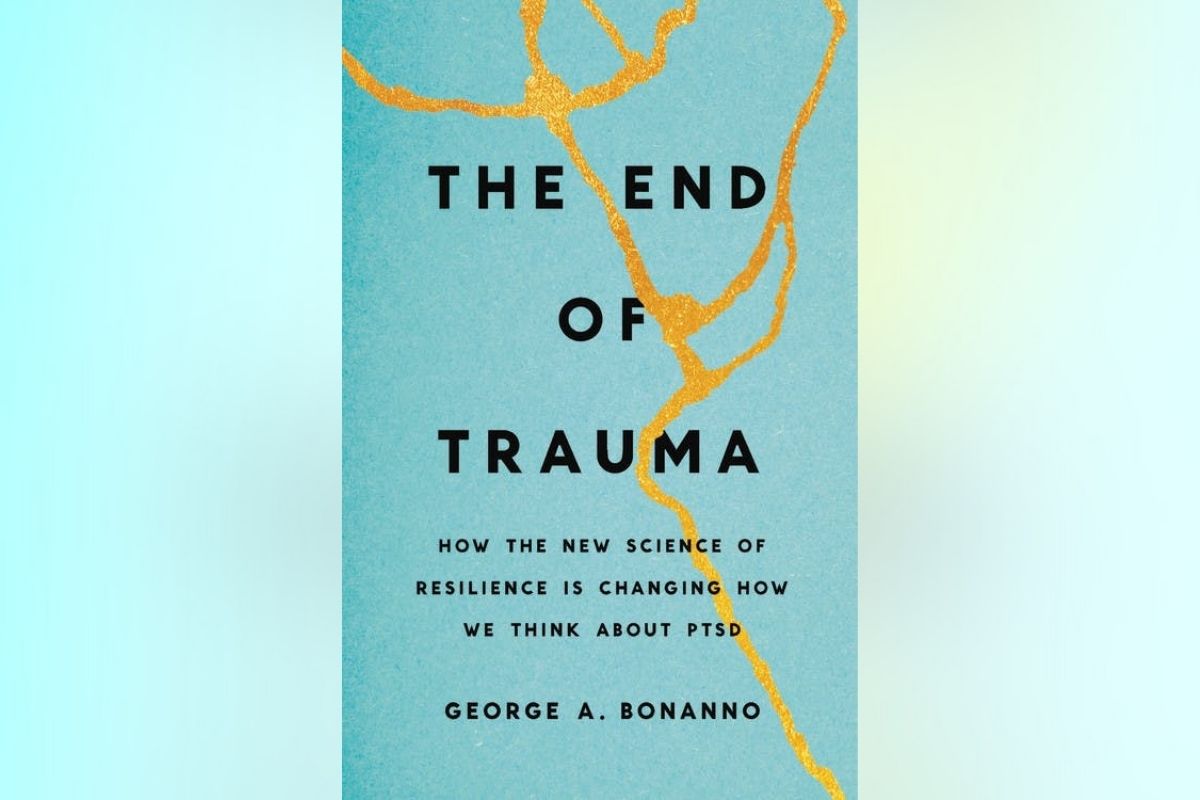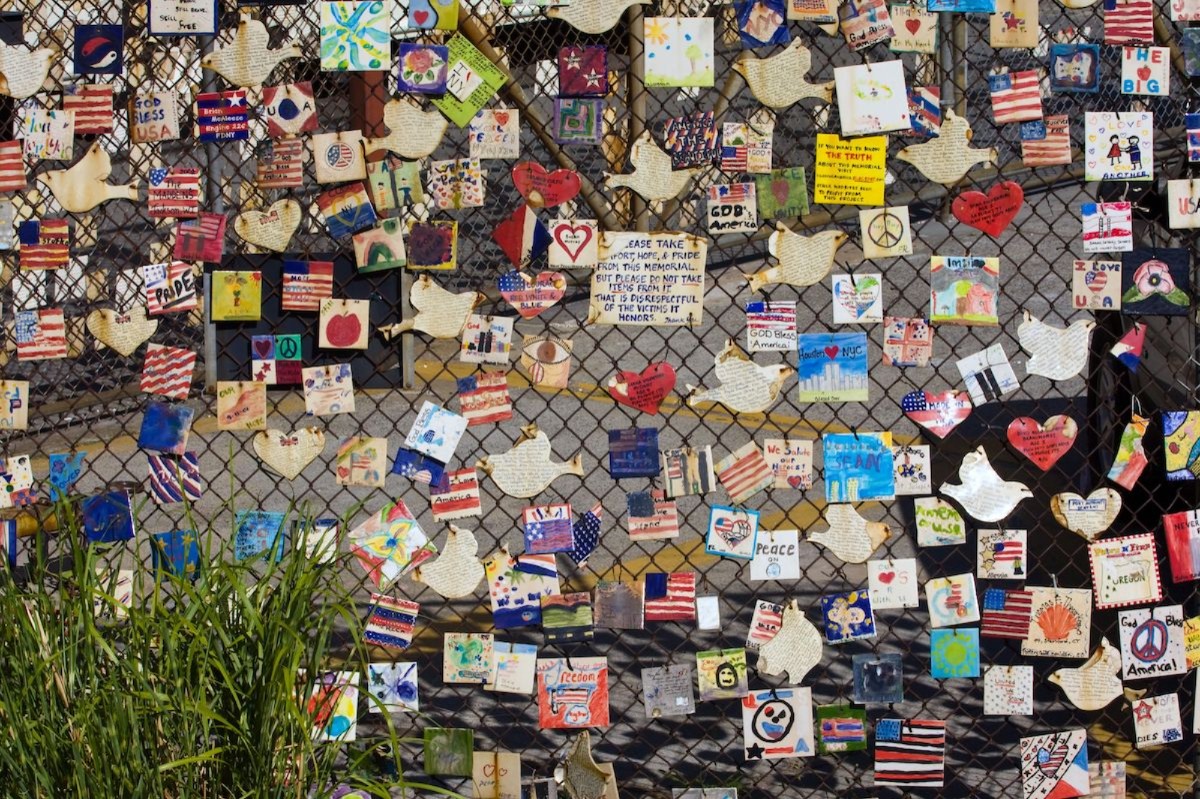Though known as the go-to expert on the psychological effects of traumatic experiences, TC’s George Bonanno is more optimistic than one might think. In his latest book, which will be released on Sept. 7, the Professor of Clinical Psychology details how his decades of research have forged pathways to better understanding human resilience after life-changing events. “There’s a myth in the mental health world that things go wrong and then you put them right,” Bonanno explained during our discussion about his book, titled The End of Trauma: How the New Science of Resilience Is Changing How We Think About PTSD (Basic Books 2021). “We are constantly adapting as we go along, and when something major happens that throws us for a loop, we still have to keep adapting as we go along.”
The book’s release falls on the eve of the 20th anniversary of the 9/11 terrorist attacks, the effects of which Bonanno explores through his research on survivors. Bonanno, who also serves as Director of the College’s Resilience Center for Veterans and Families, discussed his findings on endurance and how it relates not only to 9/11, but also the pandemic and everyday life. This interview has been edited for length and clarity.
In your book, you emphasize that flexibility is “the process we use to adapt ourselves to traumatic stress so that we can find our way to resilience” and that resilient people often have what you call a flexibility mindset. Is one born with a flexibility mindset, is it developed or is it a combination of both?
George Bonanno (GB): It’s developed. What we’re born with is pretty rudimentary. We’re born with the potential to do a lot of things, and we’re born with great potential to be flexible. Since humans have some of the largest brains in the animal kingdom, humans also have a longer period of development. What requires so much development is brain organization, and the larger brain organization allows us to be more flexible — our problem-solving ability, curiosity, etc. So we come with the equipment for it already, and it develops over time. We learn to read the context; we can learn new skills — we get a larger repertoire through trying out different ways to regulate ourselves — then try other skills if they don’t work. We’re born with the tools and the equipment, and we learn as we get older.

APPLYING RESEARCH TO REAL LIFE In The End of Trauma, TC’s George Bonanno outlines the fallacies of traditional thinking around post-traumatic stress disorder, and discusses his research and scholarship on resilience. (Photo courtesy of Basic Books)
A “flexibility” mindset, you outline, is defined by possessing optimism, challenge orientation (i.e. the ability to see negative experiences as the opportunity to solve problems), and confidence in coping — but all three work together in confronting trauma, stress, etc. Why is this the case?
GB: There may be other ways to get to the same mindset, one that says “I can do this. It’s going to be okay. Let me just get down and do it.” There’s evidence that these three components work better together than others, and they work synergistically. So if we’re more optimistic, that’s going to make us try things and that’s going to lead us to have more confidence in our ability to cope. The challenge orientation is where we say, “What is the problem here? What do I need to do?” and when we do that, we become more optimistic already. Those three propensities get us in the game. They get us focused. Maybe you could do it with one or two to get the job done, but it is really the resulting mindset is the key thing.
The flexibility mindset is the opposite of saying “This is terrible.” The flexibility mindset says, “Alright, this happened. I can do this. It is going to be okay. Let me just figure out what I need to do.” This means we’re focusing on the moment and then we’re able to deal with the moment. There’s a myth in the mental health world that things go wrong and then you put them right. It’s more that we are constantly adapting as we go along, and when something major happens that throws us for a loop, we still have to keep adapting as we go along. It’s just what life is like.
Your book includes extremely vivid accounts from research subjects who were at the World Trade Center on Sept. 11, 2001 and survived. These kinds of reflections are often colloquially called “flashbulb memories.” Is this a relevant concept to apply to understanding trauma?
GB: Not exactly. The thing about trauma is that when people are traumatized, they remember it extremely well. It may be a fragmentary memory, because they can’t stand it, so they may only take a little piece and then they can’t put it all together, but they remember it. Flashbulb memories are usually more discrete events, like when people heard that JFK died. So the idea of flashbulb memories is relevant to the broader concept, but people remember traumas vividly and more fully. And the flashbulb idea is a little bit misleading because what we remember can change, every time we remember it. It can become more firmly established and it can also become distorted.
So talking about 9/11, we examined this in our research. We asked people to share their stories in great detail, not long after 9/11. We just let them talk. Then we brought them back about a year later and we asked them to remember their experience again. The people who were severely traumatized had basically the same memory. The people who recovered changed their memories. They made them a little more benign, probably because they thought about it a great deal, while the people who were traumatized had more or less the same memory. They didn’t like thinking about it. But it’s there. They know it’s there.
In addition to reflecting on 9/11 in your book, you also recently wrote about it in the Wall Street Journal, where you suggest that the terrorist attack and the pandemic share a reflection of how we’ve learned to think about trauma: as vast, inescapable and very widespread. But your research has demonstrated the opposite: that most people are very resilient. Why is that a lesson continually relearned?
GB: Well, the lesson is that when life-changing events initially happen to us (and especially when it’s happening to lots of people), we are somewhat overwhelmed. We interpret this as leading to a huge mental health crisis: “We’ll never get over it. Other people won’t get over it.” When we’re feeling lousy, we think it will never end. It’s the same way when we’re feeling really good. So the lesson is, when a disaster happens, when a major shared event happens, both the general public tends to think there’s going to be a mental health crisis. Mental health experts do as well. But then most people get over it relatively quickly. That’s a lesson we keep relearning because when the next disaster happens, we just do the same thing all over again. We don’t feel like it will end, but then it does.

THE PROCESS OF HEALING A community-led memorial of 9/11. (Photo: iStock)
In regards to the pandemic, you also discuss in your book how many of your findings about coping and resilience played out on a larger scale in real life. Now, in the United States, many people seem to be confronting whether vaccination means “normal” life can resume, or if now is the time to remain vigilant. Are we witnessing a large-scale manifestation of different coping methods?
GB: Well, we have been throughout the pandemic. So, I think, people have used all kinds of coping mechanisms, and the pandemic is sort of one giant grounds for flexibility; it’s been changing constantly. It is changing again as we speak. We’re all very tired of it. We’re worn out, and we haven’t been able to do a lot of the things we used to do. And again in terms of flexibility, we have to go back to asking what the problem is right now. And the problem right now is that we have to endure this a bit longer, and we have to find ways to make ourselves keep continuing to cope with it. We have to be flexible because we’re now dealing with the tediousness of chronic stress.
What questions remain unanswered when it comes to human resilience?
GB: There needs to be a lot of more work on it, and while I proposed flexibility as a way to understand resilience, putting flexibility and resilience together is really complicated from a research point of view. So one of the things we still need to understand is exactly how they work together. We’re probably going to need to do something like machine learning, something very sophisticated, to figure it out. Which is doable, but that hasn’t actually been done yet.
So the way all of this fits together makes sense to me through my research, but assembling all of these components, understanding more fully how all of this works is going to take some remarkable research. So that hasn’t been done yet, and it needs to be understood a lot more.
You’ve called this book your “life’s work.” What is the most important lesson that you hope people walk away with?
GB: Not everyone is going to be okay when bad things happen, but most people will, and we humans always have been. And we now know more about how we do that than ever, so we’re going to be okay, and we can find out even more about that if we want to.
In the spirit of celebrating resilience — who is your favorite hero (real or imaginary, historic or anonymous)?
GB: One who comes to mind is Alice Neel, the painter. Her portraits are so compelling, and for years I was interested in who she was. I’ve read several biographies about her. Through most of her life, she never had any success; but she raised two kids, and she just kept painting. And then suddenly, near the end of her life, she was recognized, had major exhibitions. And I just think that is such a great thing to do. She just kept painting. There are others like this. These are the people who I admire. These go against the grain and accomplish really interesting and great things, often with little recognition. But they just keep going.
—Morgan Gilbard
